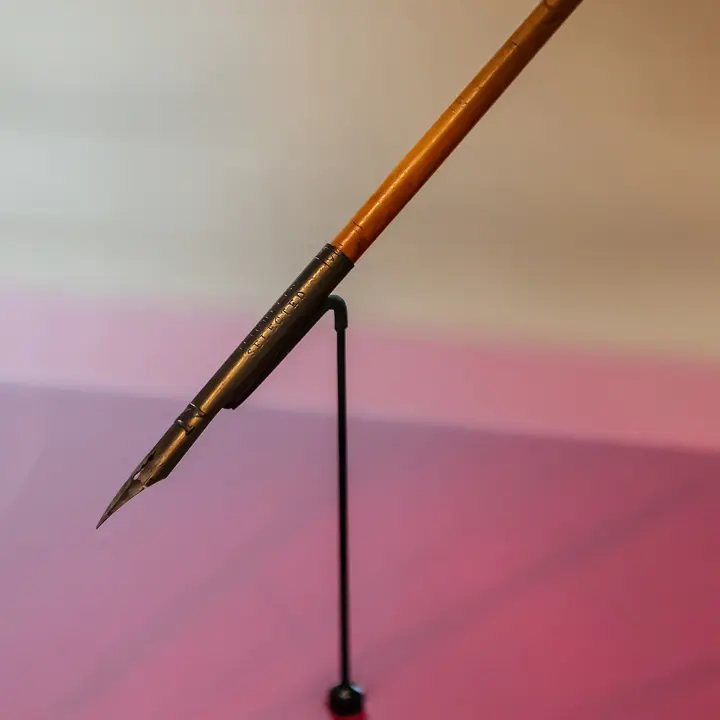
The 1849 Constitution pen
In 1849, Frederik VII signed the first Danish Constitution – using this very pen
Wolfgang Heimbach’s painting The Homage of 1660 gives you a close and detailed look at The King, nobility and ordinary people.

Wolfgang Heimbach’s slightly naive painting shows the moment when Frederik III is celebrated as Denmark’s first hereditary king on the square in front of Copenhagen Castle, on 18 October 1660. The painting is almost like a news report from the event and contains symbols intended to highlight The King’s new powers, such as the sun piercing the clouds to shine on The King.
Power struggle led to absolutism
The public homage was the culmination of a political crisis stemming from the Dano-Swedish Wars of 1657–1660. After the Danish defeat to the Swedes, Frederik III summoned the estates of the realm – representatives of the clergy, nobility and commoners – for a meeting on 8 September 1660. The purpose of the meeting was to find a way out of the miserable economic situation that Denmark was in after the wars. However, the outcome was a proposal from the clergy and commoners to limit the powers of the nobility and make the monarchy hereditary. After lengthy rivalry between monarchy and nobility, the balance of power now definitively tipped in The King’s favour. Among other implications, this meant that Frederik III’s compact with the Council of the Realm – the Coronation Charter which he had signed at his coronation – was scrapped. Subsequently, the people paid homage to Frederik III as Denmark’s first hereditary king. Thus, the nobility lost its right to negotiate with the future king, as the power now automatically passed from father to son. The enactment of the Absolute and Hereditary Monarchy Act of 10 January 1661 introduced absolutism in Denmark and made the king all-powerful. Frederik III was the first absolute king of Denmark. The powers of the absolute king were subsequently specified in the Lex Regia, also known as the Danish Act of Succession of 1665.
Absolutism continued until Frederik VII signed the Danish Constitution of 5 June 1849, which introduced constitutional monarchy in Denmark.
Wolfgang Heimbach
The painter Wolfgang Heimbach (1615–1678) was born in the County of Oldenburg in Germany. He was deaf and did not speak but was able to read and write several languages. Even if his art may seem naive, it stands out in comparison to contemporary depictions due to its rich detailing and life-like representation. His portraits were also true to life, and his many paintings of people from the upper echelons of society show that his honest depictions were appreciated. Heimbach did several portraits of both Frederik III and his consort, Queen Sophie Amalie.
In a funny detail, you can see Wolfgang Heimbach swinging his hat in the lower left corner of the painting.